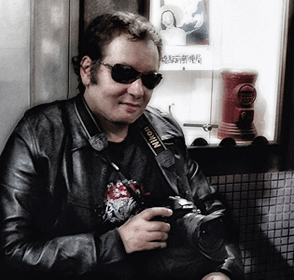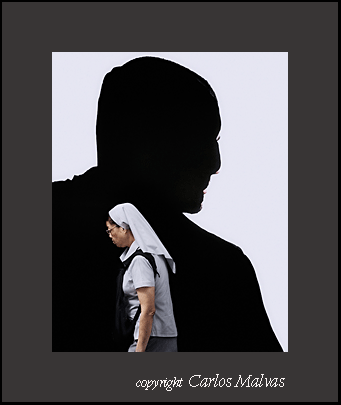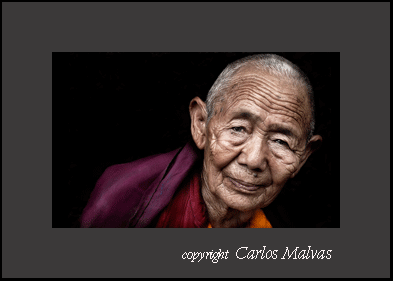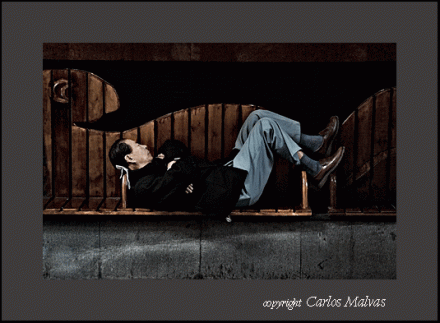 JRP: Carlos Malvas is a talented photojournalist that is making his mark in photography. With an eye towards subject impact, color, and composition Carlos Malvas is realizing his place in photography. We are pleased to share his work and vision with our readers. Thanks Carlos for sharing a moment with JRP Blog.
JRP: Carlos Malvas is a talented photojournalist that is making his mark in photography. With an eye towards subject impact, color, and composition Carlos Malvas is realizing his place in photography. We are pleased to share his work and vision with our readers. Thanks Carlos for sharing a moment with JRP Blog.
Carlos Malvas: Thank you James for your kind invitation. It is for me an honor and a pleasure to participate in your blog and answer to your questions.
JRP: Where do you call home Carlos?
Carlos Malvas: I was born in Lisbon 54 years ago, and, since 1991, live in Macau, a port in the southeast of China. It was a Portuguese colonial platform for commercial trade between Europe and the Far-East. Today it is a city of neon lights and broken dreams (many casinos).
Sharing so distant and different places not only made me aware of the cultural differences but also created a sense of detachment, which for me is fine. I feel I could live anywhere. Macau is a small city, packed with people, sometimes claustrophobic, where we have to get out several times in a year. I do travel a lot in Asia. In a certain way, we are all becoming modern nomads.
JRP: What led you to photography? Do you have any formal training?

Carlos Malvas: I was drawn to photography by a cousin of mine, who is a freelance photojournalist. His name is Carlos Guarita, born and based in England. He was covering the Portuguese Revolution during the 70’s. At that time, with him I learnt the basics in BW photography and I was introduced to the works of Cartier-Bresson, Robert Capa, Josep Koudelka, Robert Doisneau, Alvarez Bravo and Sebastião Salgado among others. I did not have any formal training in photography. But I continue to learn by books and by studying the work of the masters.
I have to mention equally my participation in Photoworkshop.com, in which the help of fellow members and staff has been precious to me in terms of feedback, support and motivation to go out and shoot (for the weekly assignments).
JRP: Why photojournalism? What made this type of photography attractive to you?

Carlos Malvas: I’m not a photojournalist nor a professional photographer. But I recognize I have a photographic sensibility more focused on people in spontaneous situations. I’m not fascinated by studio lights or by staged compositions. I think I have nor the talent nor the patience to follow that path.
Maybe the influence of my cousin. Maybe because I admire with awe and respect all the Magnum photographers. Maybe because as a sociologist, I am attracted to the theater of everyday, and what we call sociological imagination is subconsciously reflected in my way of seeing. For all these reasons, I prefer to wander around in the streets searching for faces and gestures. I look for simple stories out of the ordinary interactions and daily routines. Trying to keep minimum interference, I do not instruct people to pose or to move to other settings, nor use flash.
But unlike sociology, photography is for me, in essence, not a science (in spite of the technical nature of the camera) but a form of personal expression. And by this I mean a way of seeing, telling and questioning about things that happen in front of our eyes, not necessarily reflecting the “truth”, but also not lying. For me, photography is a personal (and somehow solitary) quest in which you need to wear good shoes and try to capture those moments of life touched by the magic of light.
JRP: What would we find in your camera bag for a typical shoot?
Carlos Malvas: Since 2007, I started to shoot with a digital camera: Nikon D200. I always carry in my bag a 24-120mm zoom, and sometimes two more zooms: 12-24 and 70-300mm.
Before, I carried a Nikon FM2 and two fixed lenses: 35mm and 85mm. I don’t use tripod, flash or other artificial light devices (unless required by an assignment).
JRP: Please describe your digital workflow and the software you use. Your portraits really standout!

Carlos Malvas: I shoot in RAW format and convert the selected digital negatives with Adobe Camera Raw Converter into Photoshop CS2. Then, – after the basic treatment: cleaning and cropping, enhancing contrast, and eliminating color casts I save a master TIFF/ RGB file.
For me, the post-production process is not rigid. It depends on what the picture tells me, on my mood and also on my inspiration in that particular moment in front of the screen. I like to experiment and create different versions of the same master image. Usually, I use 2 or 3 layers (in soft light, multiply and screen modes with different opacities) and layer masks in this process. The aim is to create a dynamic balance between light and shadow and between softness and sharpness in order to lead the eye of the viewer to the focus points I want to emphasize.
JRP: How do you handle image printing?
Carlos Malvas: This is an area that I have to study and improve much more. Last year, I bought an Epson R2400 printer, which gives pretty decent pictures, even in black and white. For more quality prints, is impossible to find here, in Macau, a good professional art printer. I must travel to Hong Kong.
JRP: Your sense of light can be striking. How did you learn to “see light” and translate that vision in your images?

Carlos Malvas: I’ve been taking pictures for quite some time, but only recently I got aware of the mysteries of light. Photography (and martial arts) taught me to look at things with a contemplative attitude. Practicing Zen helps to empty the mind from the noises that come not only from the physical environment but also from our troubles of everyday. Then we start to see the light. This is not a metaphysical or religious statement. What I mean is simply that we start to see how light touches the objects, how shadows, lines, shapes, textures or colors interact, for example, in an apparently chaotic urban scene. (From Ralph Gibson and others, I did learn that shadows can be used as shapes in a composition). Then, out of the ordinary disorder, we can make simple and clean compositions, isolating pieces of reality that are inaccessible by a distracting, casual glance or an unfocused interaction.
Following the advice of Minor White, a good exercise – not recommended for those who drive – is to take pictures without a camera. I don’t drive, so I always do this when going by bus from home to my workplace. I also carry an i-pod filled with good music. I find in music a source of inspiration (and image-dreaming) for the photographic eye. Of course, when carrying the camera and immersed in the heat of the action, my attitude is not so contemplative. Most of the time, when shooting in the street, we do not always stop and think about the light or composition. But with what we learnt before and with that training of the eye, I believe, the chances of getting better images, almost instinctively, are higher.
Besides, light can also be digitally enhanced with Photoshop. As a more flexible, chemical free darkroom, we no longer need to burn/dodge light with the hands or other masking devices. As I said before, I usually use 3 copies of the background as layers, in different blend modes. And for each one of them apply a layer mask to burn/dodge only specific areas. The idea is to create a mood or to manipulate the distribution of light.
JRP: For you what is the most critical moment of image capture?
Carlos Malvas: The most critical moment is the moment (when the shutter clicks), “le moment décisive” as Cartier-Bresson put it. The sense of timing is crucial, especially when you photograph candid portraits and people in spontaneous situations. I pay attention to hands and eyes, but also to the language of the body. In this kind of photography, the sense of anticipation is also important. For example, if I see two interesting characters talking in a street corner, I can wait for a moment of a meaningful gesture. Sometimes, I come across a good and clean background, and wait for something to happen in front of that scenario. In other occasions, I must shoot fast, with not much time to think about the rules of composition or light metering. Not only luck or instinct, but also some experience of seeing and camera preparation (pre-setting for the available light), can give some good results among the “disasters”. In those occasions there is a kind of a thrill or heat running up your spine when you sense a good snap.
JRP: Do you have any projects you are currently working on?
Carlos Malvas: I have two projects for this year. One, is to organize and upload new portfolios about my travels in Asia. The other, yet lurking in my mind, it is basically to create a collection of available light portraits, using a group of gurkhas, ex-British and Nepalese army men, that I selected in Nepal to work as prison guards in Macau.
JRP: What has been the best advice given to you by another photographer?

Carlos Malvas: In the beginning of this interview, I already mention my photojournalist cousin Carlos Guarita, who taught me to shoot near the subjects, echoing the widely spread words of Robert Capa: “If your photographs aren’t good enough, you’re not close enough”.
JRP: What advice would you share with photographers starting out?
Carlos Malvas: Walk hard, do it with passion and visit magnumphotos.com for much better advices (there’s an article in the blog archive titled “wear good shoes” where you can find good advices from the Magnum photographers).
JRP: Thank you Carlos for sharing your thoughts and images with us. It has been a pleasure talking with you. I wish you continued success.
Carlos Malvas: The pleasure was mine. I wish you all the best for you and your blog project and keep on shooting.
JRP: To view more of Carlos Malvas‘ photography please follow this link:
http://www.betterphoto.com/Premium/Default.aspx?id=194958&mp=V3
